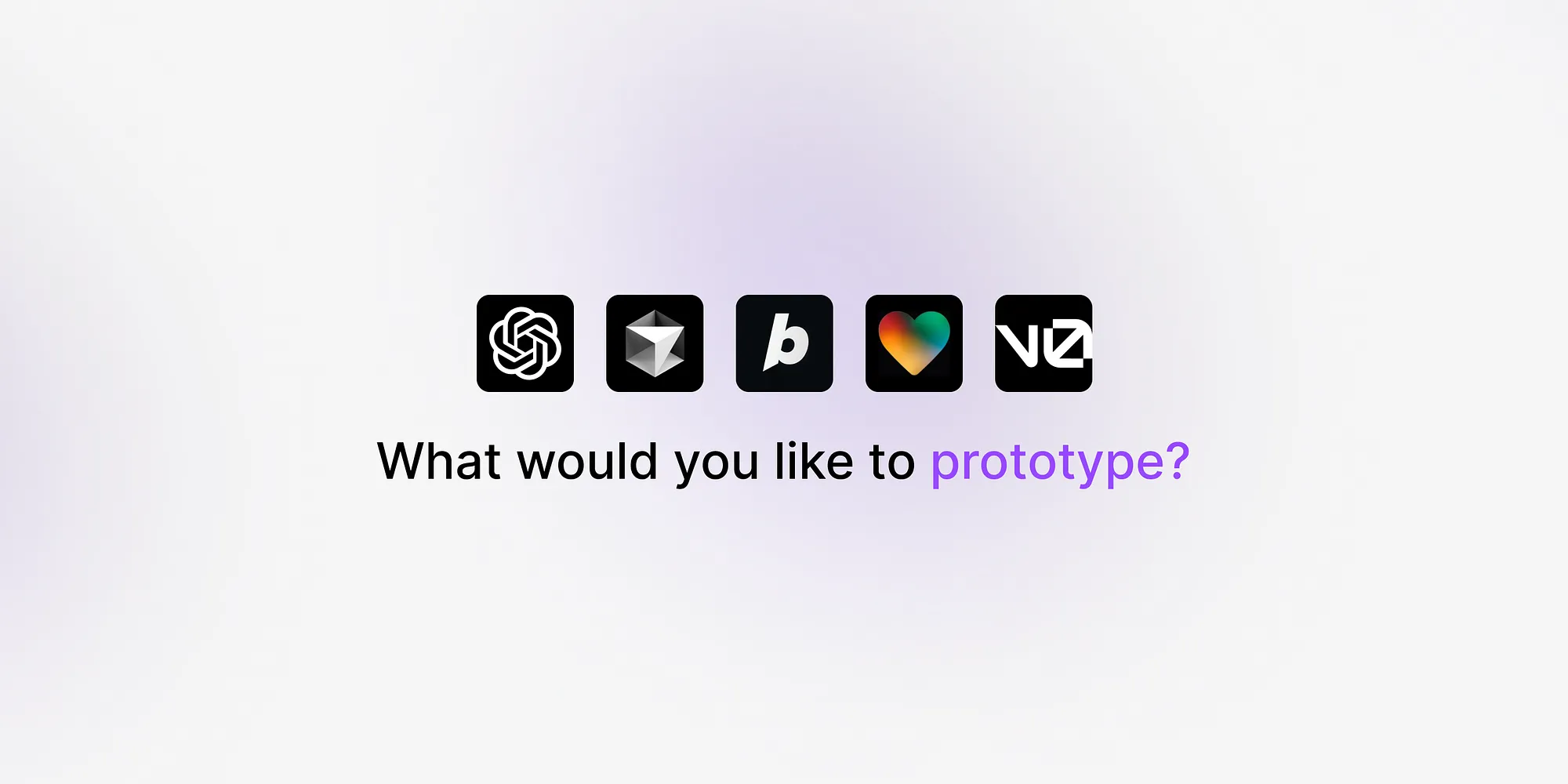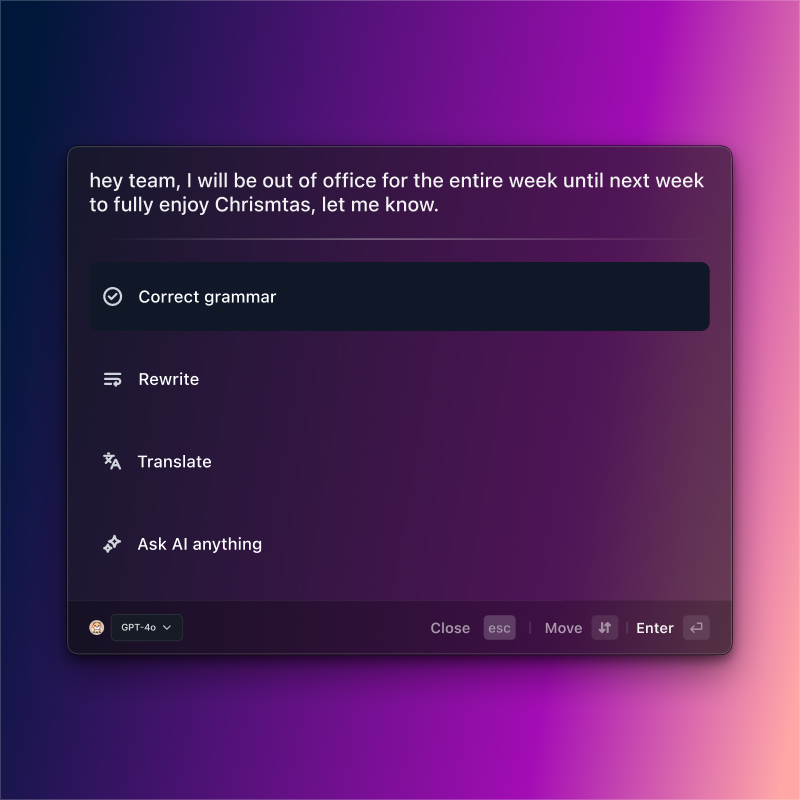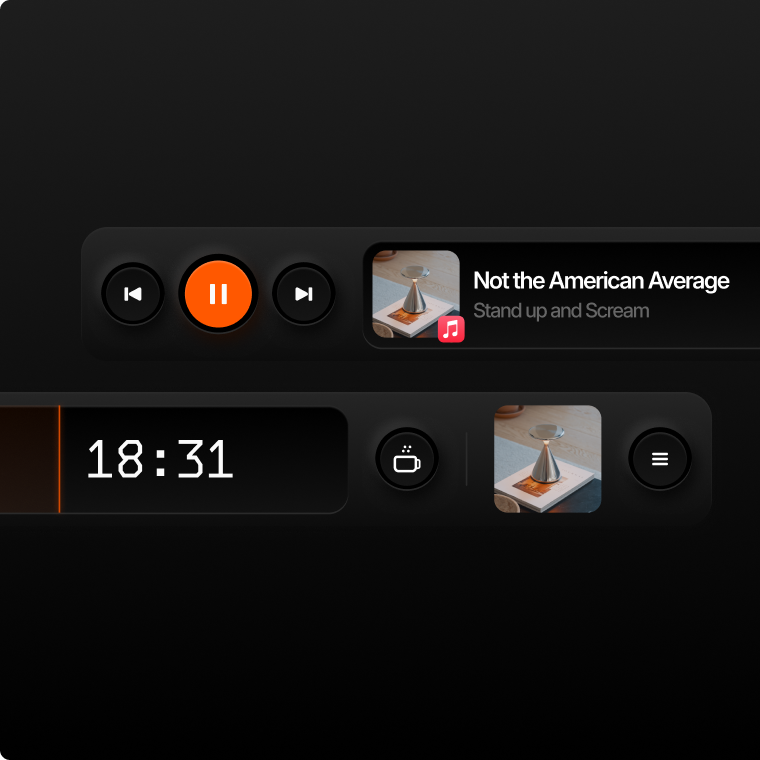
Hey. This is Ben, a Growth Design Expert.

Thanks for visiting my portfolio. This site is best experienced on a desktop. Browse this site again on a desktop to see some work I've done in the past :)
Though since you are already here, listen to a podcast I was featured on or explore some articles I've written to understand my approach to design and product.
(In case you are tired of
reading portfolio...)



Hi. I am Ben.
A Growth Designer.

Sr/Lead Product Designer with a data background specializing in AI & Growth Design.
Building Notchflow.app and doing Growth at Miro.
(In case you are tired of
reading portfolio...)


Linkedin profile
Redesigning onboarding
An onboarding redesign that increased activation rate by 19% and sign-up rate by 41%
Read case study

Miro end-of-year recap
An end-of-year campaign that engaged more than 3M users globally.
🔑 Reach out for access

A Github for Data Scientists
We built a platform that enables Data Scientists to track their machine learning models and all changes made by the team.
🔑 Reach out for access

App for managing meetings
I co-founded and developed the OrganAI.se app, which uses AI to simplify scheduling meetings between people (prior to the release of ChatGPT).
🔑 Reach out for access

I am passionate about building products that solve everyday problems for people—it's what motivates me every day. Here are some of the recent apps I've developed
BenAI
An internal tool I built in Lokalise to automate customer feedback that saved the company $100k+ per year.

App for daily motivation

Lately, I've been writing a lot for Smashing Magazine and UXCollective to share my thoughts.
Published in UXCollective · Feb, 2025
A guide to AI prototyping for product designers
AI is more than a product; it’s a platform that will change how and what we design.
#AI
8 mins read | 20k+ views

Designing user onboarding: lessons from Figma, Duolingo, and more
Find out the common mistakes in designing onboarding and learn the secret sauce behind engaging onboarding from 20+ top tech companies.
#Growth
13 mins read | 50k+ reads

Published in UXCollective · Mar, 2024
Designing better UX for AI — 8 Tips from 20+ companies
Let’s not add AI for the sake of AI. Let’s prioritize user needs, not the technology.
#AI
9 mins read | 10k+ views

Published in UXCollective · Jun, 2024
Why do designers become managers?
Learnings from talking with 10 design managers from Booking dot com, Miro, Zalando, Smartsheet, and more.
#Career
10 mins read | 17k+ reads

Designers are problem solvers at heart—I truly believe that by leveraging our skills, we can make the world a better place.
My goal is to contribute to these ideals in any way I can. If you feel the same, I’d love to talk.
Below are a few Q&As to help you determine if I am the right fit.
What's your design process?
Tap to read
Close
I believe the best answer of this, is - it depends.
Every problem that we are solving is different, with different people, different engineer, different PM, different users, something even different product, so I don’t believe there’s a one-size-fits-all design process that fits everything.
However, in an ideal world, this is my preferred process:
#1 Leverage both qualitative and quantitative data
I probably don’t need to emphasize the importance of having qualitative data if you are reading this. Additionally, as a designer with a data background, I write my own SQL queries and conduct analyses using tools like Amplitude and Hotjar to gather quantitative data. This approach allows us to compare and combine it with qualitative data for a comprehensive understanding.
#2 Workshop
‘Everyone Is A Designer' — Tim Brown, CEO of IDEO.
I believe our role in a company is to ignite the designer's heart within everyone, and that's why I enjoy facilitating workshops with my team to solve problems and propose solutions together."
#3 A growth mindset
I don’t believe there’s such thing as a "perfect design solution."
I believe the best way to ship a design is to optimize for learning by designing something, quickly testing it with users, shipping it, and then improving it through an iterative process. My design process aligns closely with this principle, as I prefer rapid iterations to gather feedback quickly from both the team and users.
Very often, you'll see me quickly prototyping something while people are talking in a meeting, or I might come to you the next day with a rough idea for a design to get feedback. I might even reach out to users to gather their thoughts.
How do you collaborate with others?
Tap to read
Close
One thing I learned as I get more senior is UX is 80% about managing stakeholders and 20% about design. The better relationship you have with your directors, PMs & Engineers, the better you will be able to ship a good UX as a team.
#1 Trust Battery Theory
I am a big believer in the Trust Battery Theory, a concept proposed by Tobi Lütke, CEO of Shopify. This theory suggests that relationships start with a 'trust battery' charged to 50%. Each interaction either charges or drains the battery, reflecting the level of trust between individuals.
This metaphor highlights the dynamic nature of trust, which can grow or diminish over time based on our actions. Recognizing the importance of maintaining high levels of trust, I proactively engage with colleagues and clients to strengthen relationships. Whenever I sense the trust battery is depleting, I take immediate steps to address concerns and rebuild confidence, ensuring continuous positive engagement and collaboration.
#2 I run a lot of team workshops
As mentioned in another Q&A, I believe workshops are an amazing way for teams to sit together, share ideas, explore solutions, and get to know each other better. Being a certified facilitator, I understand the importance of running workshops that encourage innovation and continuous improvement within the team.




